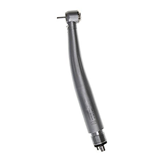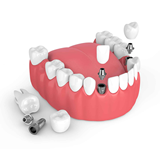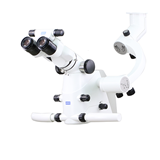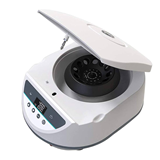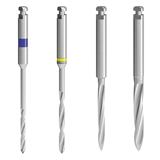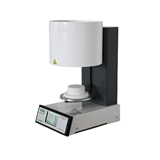He says the industry is currently suffering from a serious lack of dentists to cope with an increasing number of dental problems and the whole system needs a massive overhaul. This is Part 1 of 3 Q&As with Zoellner.
What is the Association for the Promotion of Oral Health?
We’re an independent think tank and advocacy group that campaigns for improved oral health services in Australia. Our think tank is composed of people from across the whole of the dental and paradental profession, as well as community groups outside of dentistry, such as academics, private practitioners, oral practitioners, medical practitioners and people from the insurance industry. So we have a very broad range of people involved and the council has been involved in analysing the challenges facing the oral health dentistry in Australia for some time. We have also been developing a strategy for dealing with these problems. Some of our strategies are already in the process of being put into practice, therefore we are also very active in trying to get the resources required to make these strategies work. Our work has involved developing media campaigns and political campaigns to try to drive the necessary public debate and political activity needed to address the problems that we have in the oral industry. We have a total of about 280 people involved with the association.
Do you view these problems from a national or state perspective?
The problems in oral health are really nationwide and are also truly international issues. But our group was really formed from the nucleus of people who are based in Sydney. We recognise that in the public system NSW has a very low level of funding, which is also the case with other states. So it seems to make sense for us to focus on issues that are close to home in NSW, but at the same time, we do have a national concern too. Although much of our advocacy has been at the state level, we are also very active in encouraging advances at a national level. So all of our policy documents are written from a national perspective. Last year we conducted a forum based on an implementation strategy for a national oral health plan. This included representation from people based in Western Australia, Southern Australia, the Federal Government, and the Federal Australian Dental Association.
What are the biggest issues facing dental care in Australia over the next five years?
The big problem is a mismatch between workforce and community needs. There’s already a gross under supply of service capacity in the dental system, and that’s in the private and the public sector. That under supply of workforce has been there for some time, but it’s getting much more acute. And within the next 5/10 years it will get even worse in this country. For example, there are numerous separate studies showing an increase in the amount of untreated oral disease. On one hand, that’s happening really because people have more teeth these days so it’s more common that they get these diseases. Because of the use of fluoride, people are retaining their teeth for longer and even into old age, so they are more prone to diseases now than ever before. Separate to that, proportionately, there is less work force available to deliver the services for maintaining the teeth of patients. The projection is that by 2010, relative to 2000, Australia will have about 1,500 dental professionals too short to deliver services that were already inadequate in 2000.
The OECD (Organisation for Economic Co-operation and Development) average for dentists per every 100,000 people is 56. However, Australia’s average is 42 per 100,000 people. In metropolitan areas, we’ve got 52 dentists to 100,000 people. But in rural areas it goes down to 28 or so. Some parts of rural Australia have only two dentists per 100,000 people. There’s a place in Western Australia that has only 14 dentists to 100,000 people. Relative to community needs, there’s a gross under supply of service capacity, and that’s the biggest challenge that we face now, and that’s going to get much more acute in the future, with baby boomer dentists retiring and also baby boomer patients retiring, all of whom will have their own teeth instead of dentures. They will need fillings serviced, as well as other various historical oral diseases from the past that will have to be maintained. Other people will require dentures to be replaced, so it is going to pose a huge problem in the future.
How did the dental industry find itself in this mess?
It is because the number of oral diseases around today is rising but there are relatively fewer dentists available in the community in comparison to years gone by. Although there has been an increase in the number of medical schools around and nurses being trained because of population growth (needing the work force to grow with it), this unfortunately hasn’t also happened in dentistry. 25 years ago we trained 1/3 more dentists than we do now. But we had a small population then, and we had actually less need for dentists in the community because more people had their teeth extracted when they were young. Now the community need for dentistry is higher, but we are training fewer dentists.
Is the Government not doing enough to recruit dentists?
There’s no shortage of people who want to train into dentistry, the problem is that the number of training positions has reduced. The University of Sydney had an intake of 112 dental students per year 25 years ago, but that went down progressively until it hit a low point 7/8 years ago, when only 45 dentists were taken in each year. Now it’s being pushed back up towards levels that were comparable to 25 years ago. Next year we’re going to have 120 first year students again. Another issue is that we don’t have enough resources for them to work with. All of the traditional academics are now either dead or retired and there has also been a reduction in training facilities and positions, which means that the training infrastructure has been degraded. So now we are seeing a very belated attempt in NSW to increase student positions, but where are the resources to support them? They are simply not available.
We are asking important questions, such as: How are we going to support all the students that we are hoping to get next year? We don’t have the staff, the dental chairs or the physical resources and quite frankly there are very few dental academics left, so we are very worried about how it’s going to be done. Nonetheless that’s what’s got to be done anyway.
In Part 2, published next week, Zoellner explains what needs to be done to fix these problems.



